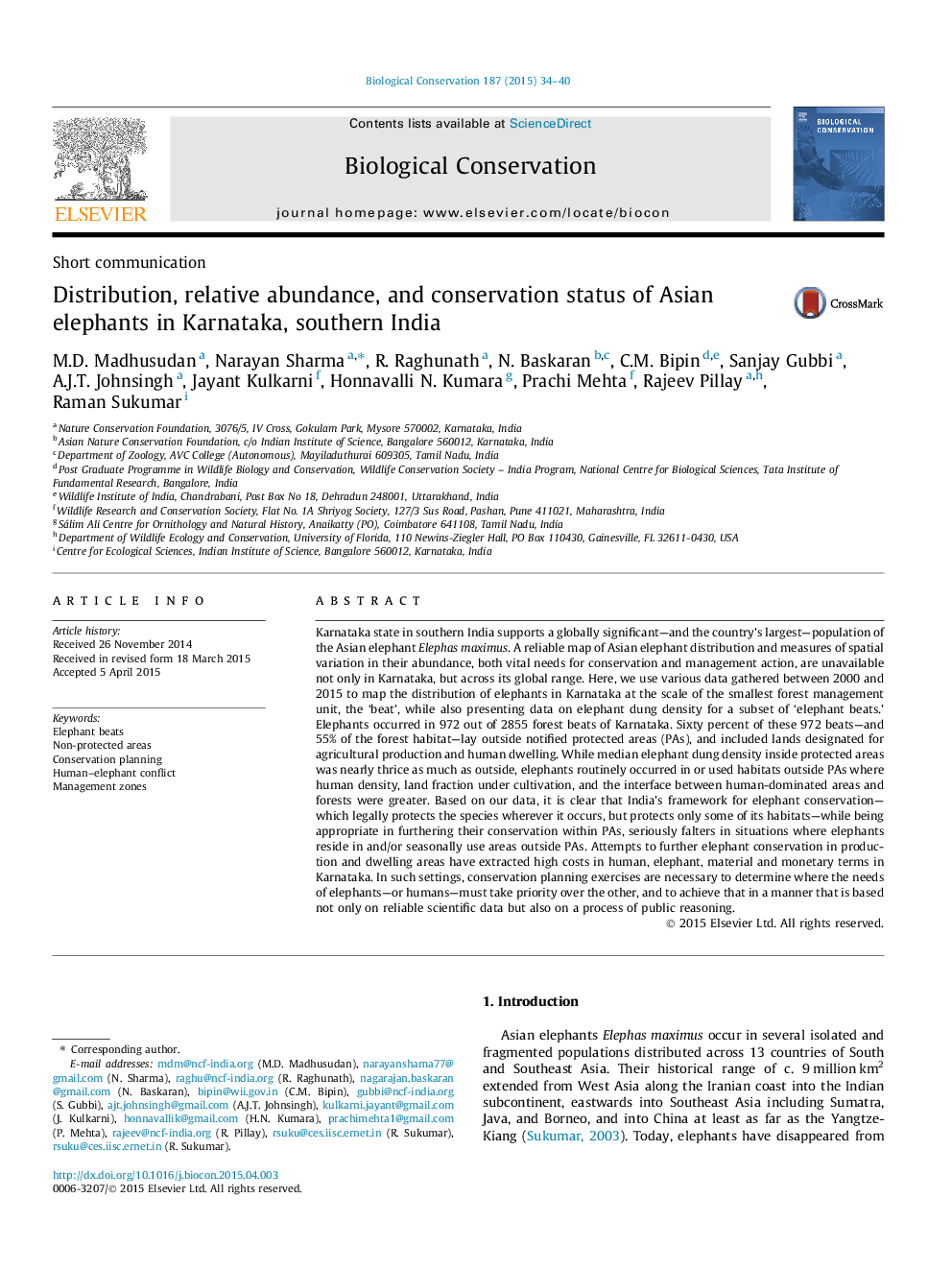| کد مقاله | کد نشریه | سال انتشار | مقاله انگلیسی | نسخه تمام متن |
|---|---|---|---|---|
| 6299275 | 1617914 | 2015 | 7 صفحه PDF | دانلود رایگان |
عنوان انگلیسی مقاله ISI
Distribution, relative abundance, and conservation status of Asian elephants in Karnataka, southern India
ترجمه فارسی عنوان
توزیع، فراوانی نسبی و وضعیت حفاظت از فیل آسیا در کارناتاکا، جنوب هند
دانلود مقاله + سفارش ترجمه
دانلود مقاله ISI انگلیسی
رایگان برای ایرانیان
کلمات کلیدی
فیل بیت، مناطق غیر حفاظت شده، برنامه ریزی حفاظت، انسان درگیری فیل ها، مناطق مدیریتی،
موضوعات مرتبط
علوم زیستی و بیوفناوری
علوم کشاورزی و بیولوژیک
بوم شناسی، تکامل، رفتار و سامانه شناسی
چکیده انگلیسی
Karnataka state in southern India supports a globally significant-and the country's largest-population of the Asian elephant Elephas maximus. A reliable map of Asian elephant distribution and measures of spatial variation in their abundance, both vital needs for conservation and management action, are unavailable not only in Karnataka, but across its global range. Here, we use various data gathered between 2000 and 2015 to map the distribution of elephants in Karnataka at the scale of the smallest forest management unit, the 'beat', while also presenting data on elephant dung density for a subset of 'elephant beats.' Elephants occurred in 972 out of 2855 forest beats of Karnataka. Sixty percent of these 972 beats-and 55% of the forest habitat-lay outside notified protected areas (PAs), and included lands designated for agricultural production and human dwelling. While median elephant dung density inside protected areas was nearly thrice as much as outside, elephants routinely occurred in or used habitats outside PAs where human density, land fraction under cultivation, and the interface between human-dominated areas and forests were greater. Based on our data, it is clear that India's framework for elephant conservation-which legally protects the species wherever it occurs, but protects only some of its habitats-while being appropriate in furthering their conservation within PAs, seriously falters in situations where elephants reside in and/or seasonally use areas outside PAs. Attempts to further elephant conservation in production and dwelling areas have extracted high costs in human, elephant, material and monetary terms in Karnataka. In such settings, conservation planning exercises are necessary to determine where the needs of elephants-or humans-must take priority over the other, and to achieve that in a manner that is based not only on reliable scientific data but also on a process of public reasoning.
ناشر
Database: Elsevier - ScienceDirect (ساینس دایرکت)
Journal: Biological Conservation - Volume 187, July 2015, Pages 34-40
Journal: Biological Conservation - Volume 187, July 2015, Pages 34-40
نویسندگان
M.D. Madhusudan, Narayan Sharma, R. Raghunath, N. Baskaran, C.M. Bipin, Sanjay Gubbi, A.J.T. Johnsingh, Jayant Kulkarni, Honnavalli N. Kumara, Prachi Mehta, Rajeev Pillay, Raman Sukumar,
